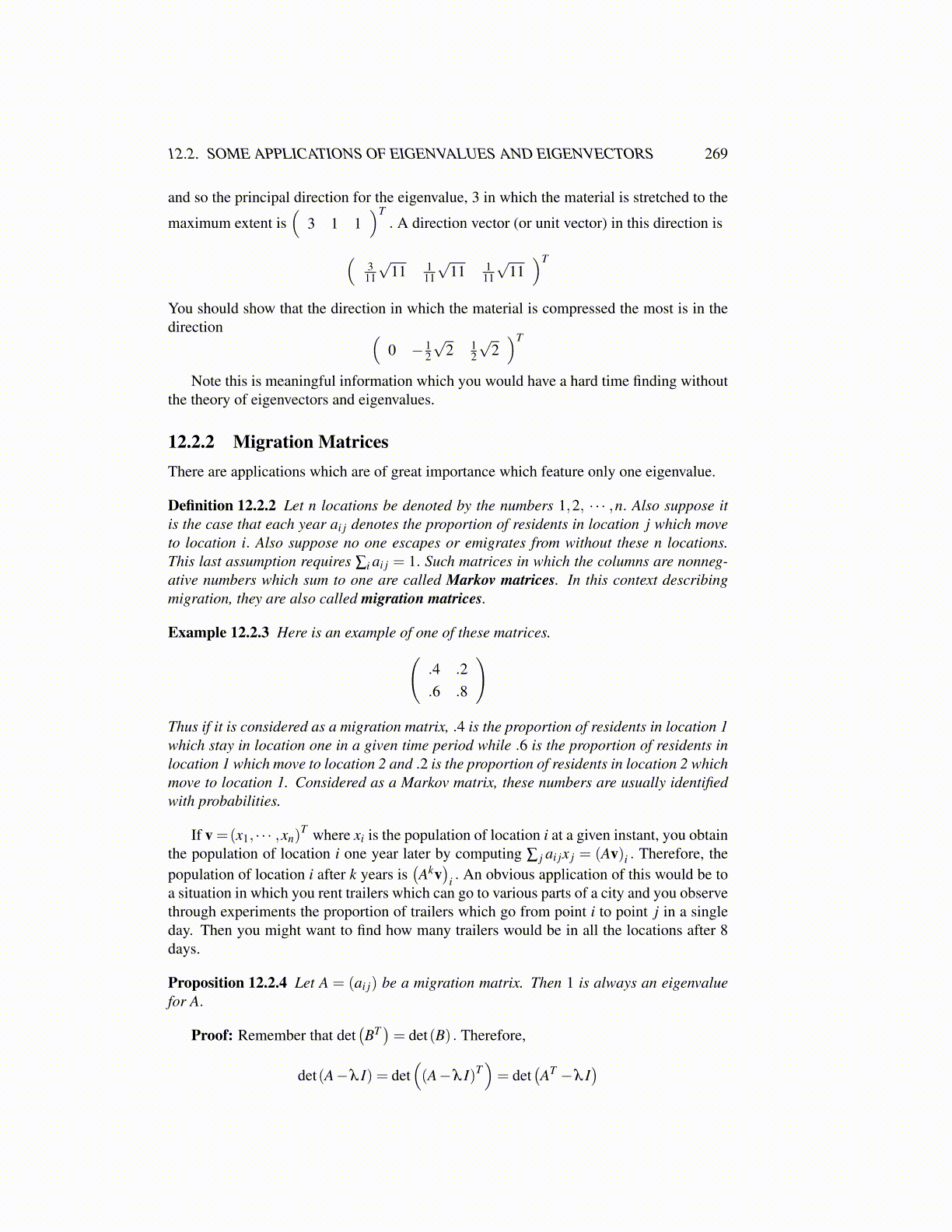
12.2. SOME APPLICATIONS OF EIGENVALUES AND EIGENVECTORS 269
and so the principal direction for the eigenvalue, 3 in which the material is stretched to the
maximum extent is(
3 1 1)T
. A direction vector (or unit vector) in this direction is
(311
√11 1
11
√11 1
11
√11)T
You should show that the direction in which the material is compressed the most is in thedirection (
0 − 12
√2 1
2
√2)T
Note this is meaningful information which you would have a hard time finding withoutthe theory of eigenvectors and eigenvalues.
12.2.2 Migration MatricesThere are applications which are of great importance which feature only one eigenvalue.
Definition 12.2.2 Let n locations be denoted by the numbers 1,2, · · · ,n. Also suppose itis the case that each year ai j denotes the proportion of residents in location j which moveto location i. Also suppose no one escapes or emigrates from without these n locations.This last assumption requires ∑i ai j = 1. Such matrices in which the columns are nonneg-ative numbers which sum to one are called Markov matrices. In this context describingmigration, they are also called migration matrices.
Example 12.2.3 Here is an example of one of these matrices.(.4 .2.6 .8
)
Thus if it is considered as a migration matrix, .4 is the proportion of residents in location 1which stay in location one in a given time period while .6 is the proportion of residents inlocation 1 which move to location 2 and .2 is the proportion of residents in location 2 whichmove to location 1. Considered as a Markov matrix, these numbers are usually identifiedwith probabilities.
If v =(x1, · · · ,xn)T where xi is the population of location i at a given instant, you obtain
the population of location i one year later by computing ∑ j ai jx j = (Av)i . Therefore, thepopulation of location i after k years is
(Akv)
i . An obvious application of this would be toa situation in which you rent trailers which can go to various parts of a city and you observethrough experiments the proportion of trailers which go from point i to point j in a singleday. Then you might want to find how many trailers would be in all the locations after 8days.
Proposition 12.2.4 Let A = (ai j) be a migration matrix. Then 1 is always an eigenvaluefor A.
Proof: Remember that det(BT)= det(B) . Therefore,
det(A−λ I) = det((A−λ I)T
)= det
(AT −λ I
)